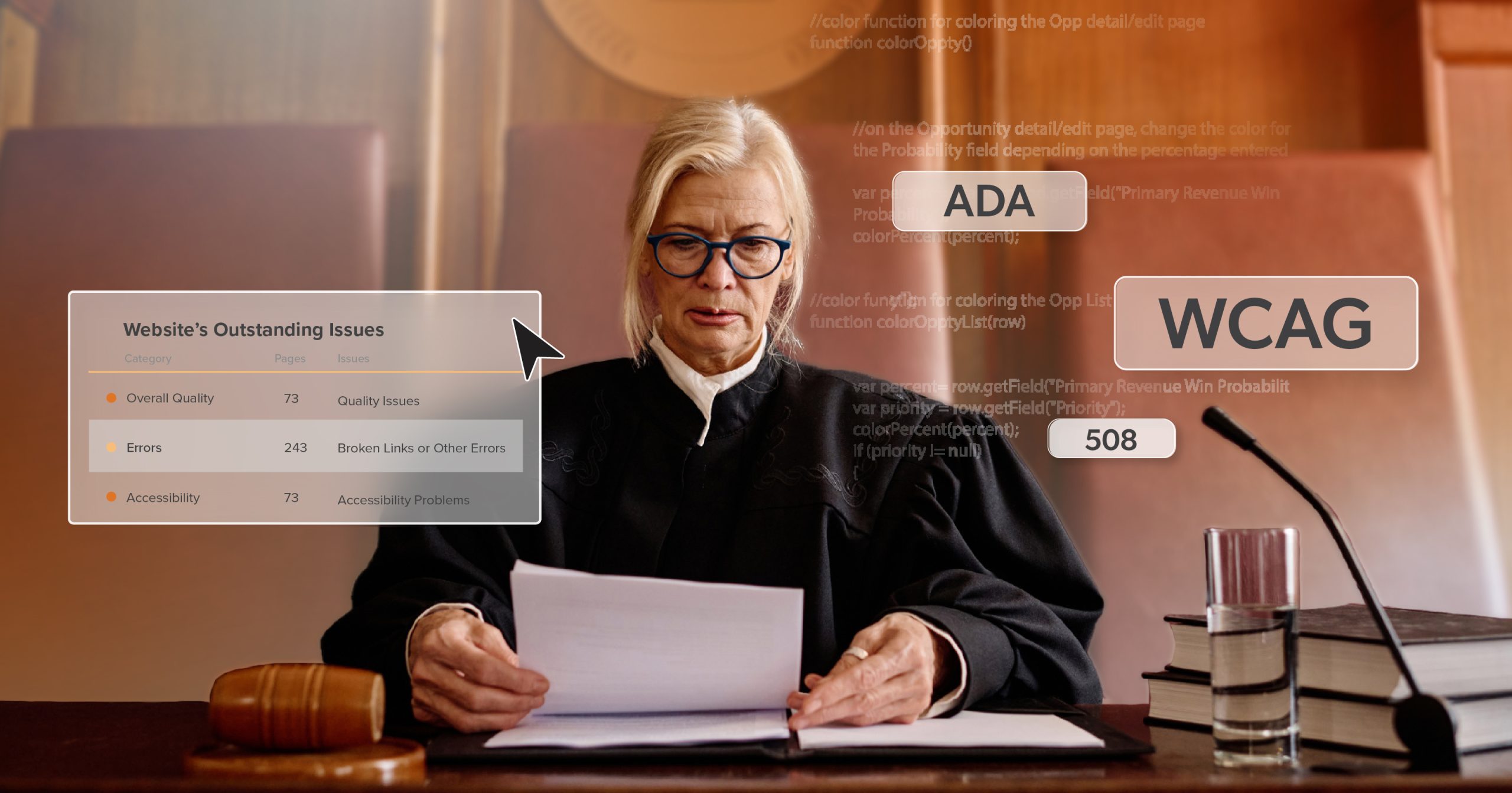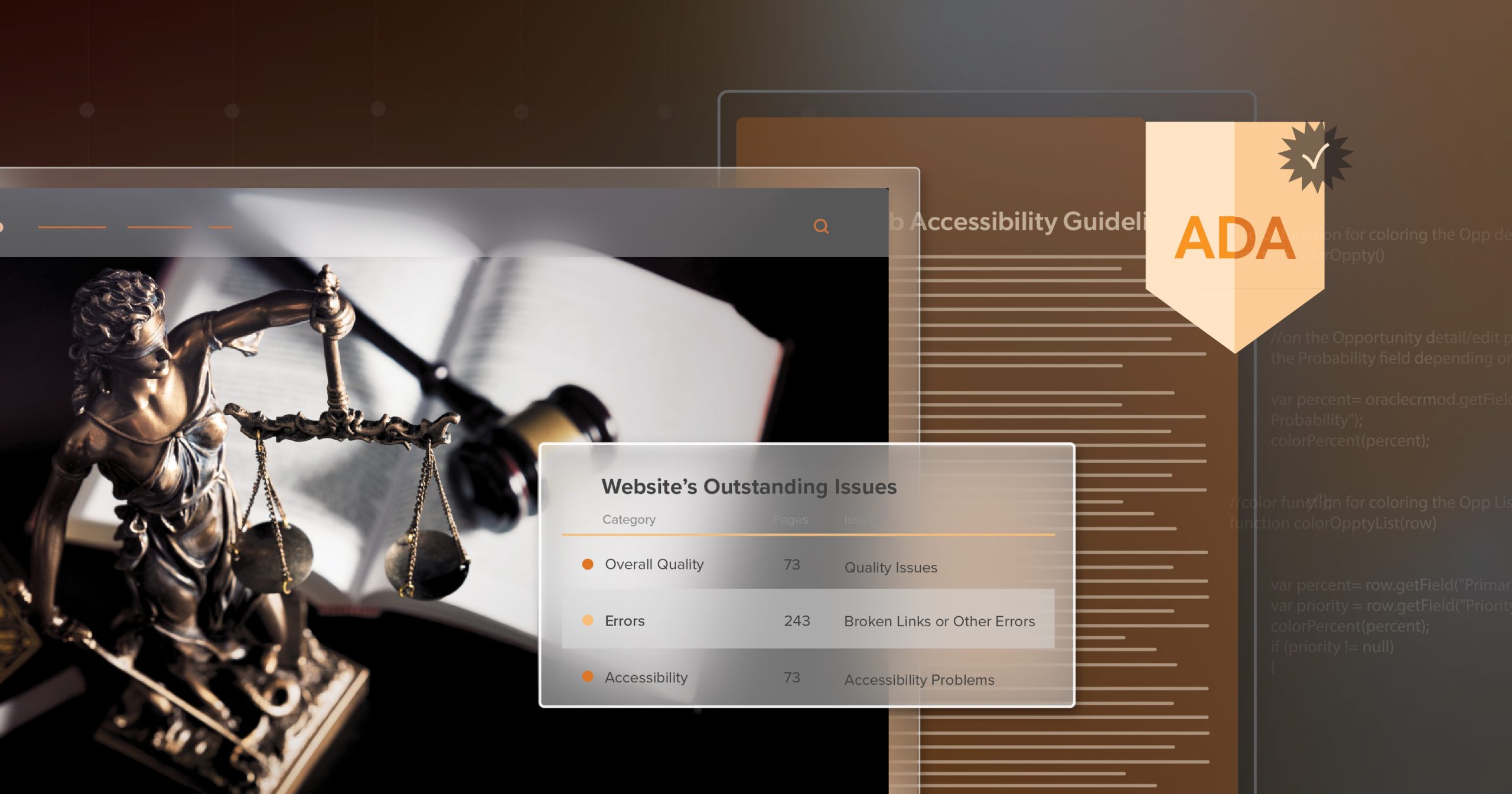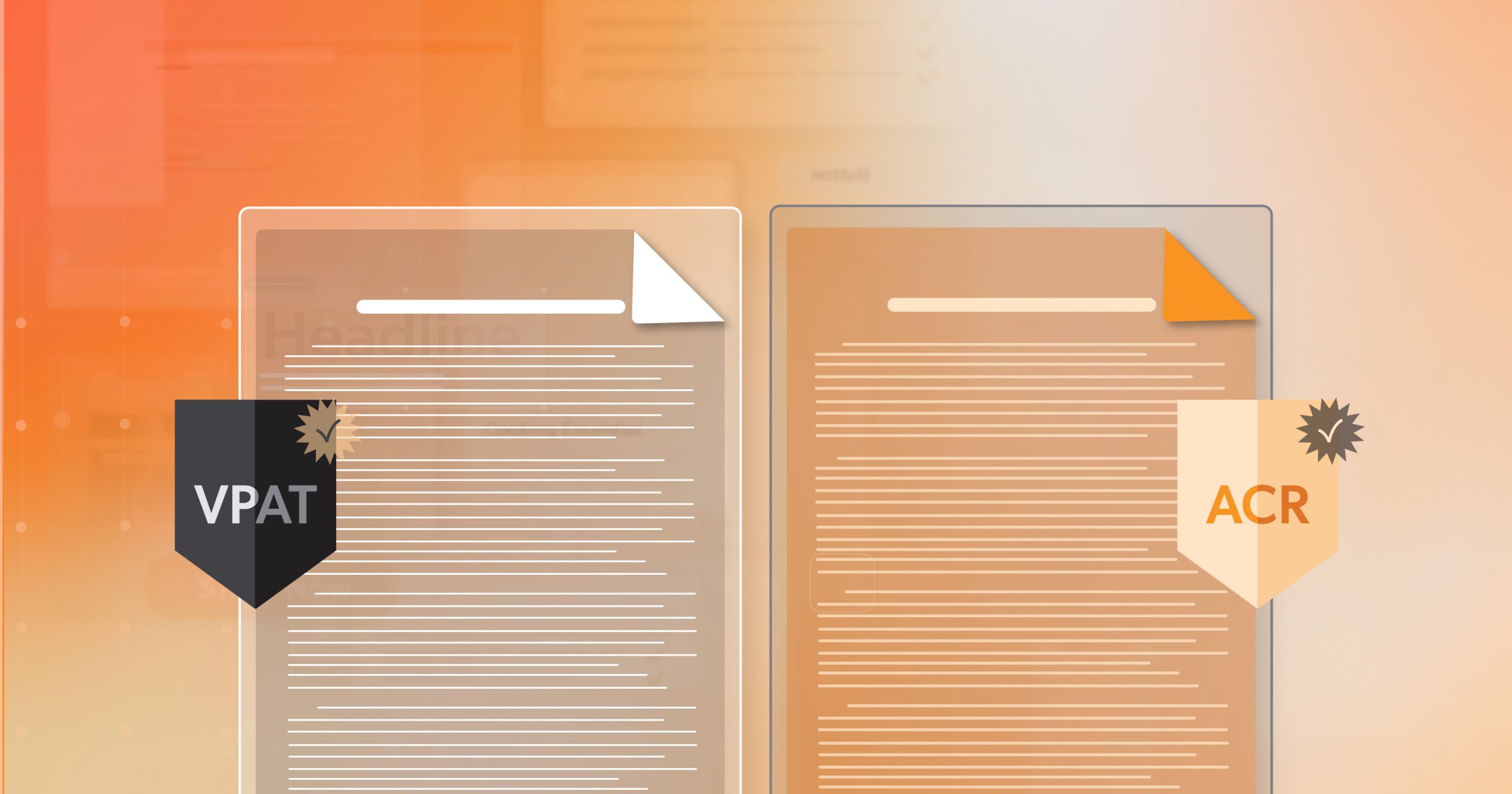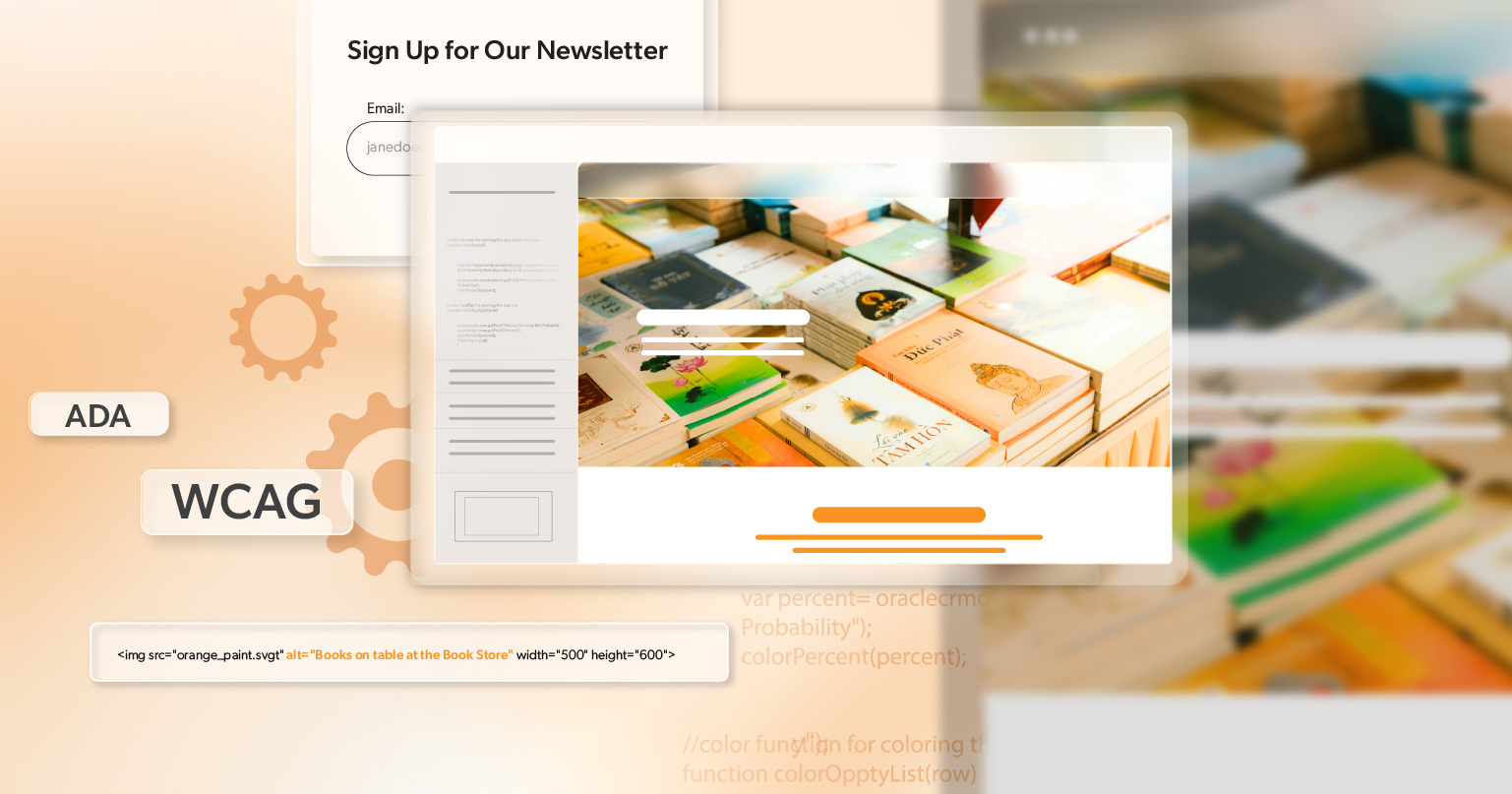Over the past decade, more companies have been blindsided by accessibility lawsuits carrying price tags in the hundreds of thousands—or even millions. The culprit isn’t just the Americans with Disabilities Act (ADA). In many cases, it’s the ADA combined with California’s Unruh Civil Rights Act (Unruh Act).
Each law was written to protect people with disabilities and promote equal access. But together, they’ve become a powerful tool for legal action, especially in California, where plaintiffs can seek statutory damages. What often begins as a small accessibility oversight—a missing alt tag or an inaccessible entrance—can escalate quickly once both laws are involved.
This article breaks down how the ADA and Unruh Act overlap, why class actions magnify the risk, and what practical steps businesses can take to reduce exposure and protect their reputation.
Two Laws, One Powerful Combination
Understanding why this pairing leads to such large settlements starts with how each law operates.
The ADA: A Federal Baseline for Accessibility
Passed in 1990, the Americans with Disabilities Act set the national standard for accessibility. It prohibits discrimination based on disability and requires that businesses, public agencies, and digital services be accessible to everyone.
Under Title III, that means:
- Removing barriers in buildings and parking lots
- Maintaining accessible routes and signage
- Making digital platforms—like websites and apps—usable with assistive technology
Violating the ADA generally results in a court order to fix the issue, not a payout to the plaintiff. That changes under California law.
The Unruh Act: California’s Added Layer of Risk
California’s Unruh Act goes further than the ADA. Enacted in 1959, it bans discrimination on many grounds—disability among them—and allows plaintiffs to claim statutory damages, usually $4,000 per violation.
Here’s where it becomes significant: under California law, a violation of the ADA automatically counts as a violation of the Unruh Act. That link gives plaintiffs the right to seek financial damages for what would otherwise be a non-monetary ADA claim.
In practice, one missed accessibility requirement in California can generate dual claims—federal and state—and quickly turn into a costly lawsuit.
When One Claim Becomes Hundreds: The Class Action Multiplier
A single violation may not break a company. A class action might.
Under the Unruh Act, damages apply per person, per incident. So if one user encounters an inaccessible website form, that’s $4,000. If 500 people encounter it, the number multiplies fast.
California courts often enhance damages further when multiple plaintiffs share the same experience. What starts as a small issue—such as poor contrast or an inaccessible navigation menu—can balloon into a multimillion-dollar settlement.
That’s why the class-action mechanism is considered the biggest financial threat for companies operating in or serving customers from California.
State-Level Accessibility Laws on the Rise
California may have started the trend, but other states are following suit. New York, Massachusetts, and Illinois have strengthened their accessibility laws in ways that complement or exceed federal standards.
Many of these laws now reference the Web Content Accessibility Guidelines (WCAG)—the same international standards used to measure digital accessibility. That means:
- Websites and mobile apps are increasingly part of compliance expectations.
- State and federal claims can overlap, increasing exposure.
- A single accessibility gap can violate multiple laws at once.
This expanding patchwork of regulations makes compliance more complicated. Businesses that operate nationally need to keep a close eye on both federal rules and the evolving state-level requirements that mirror the Unruh Act.
How Small Gaps Turn Into Large Settlements
Accessibility lawsuits rarely start with large systemic failures. More often, they begin with something small.
- A faded accessibility sign in a parking lot
- A checkout button that can’t be reached with a keyboard
- A product image missing alt text
Individually, these might seem like minor oversights. In California, they can qualify as Unruh Act violations and open the door to class actions.
Law firms that specialize in accessibility cases actively scan websites and physical locations for these gaps. And since digital platforms are constantly updated—with new themes, plugins, or content—accessibility issues can reappear even after remediation.
Practical Steps to Reduce Risk
Addressing accessibility proactively isn’t just a legal safeguard—it’s good business practice. The steps below can help reduce the likelihood of a claim under the ADA or Unruh Act.
1. Conduct Regular Accessibility Audits
Schedule audits for both your physical spaces and your digital properties. An experienced accessibility partner can evaluate:
- Entrances, parking areas, restrooms, and signage
- Website structure, navigation, and color contrast
- App functionality and compatibility with assistive tools
Audits help identify issues before they reach a courtroom.
2. Strengthen Digital Accessibility
Digital accessibility lawsuits are among the fastest-growing categories. To stay compliant:
- Follow WCAG 2.1 AA standards.
- Test with screen readers and keyboard navigation.
- Review every update—new features can reintroduce barriers.
Working with a web accessibility partner like 216digital ensures your compliance strategy evolves alongside your website.
3. Train Staff Across Departments
Accessibility shouldn’t live in a single department. Train employees—from developers to front-desk staff—to recognize and report accessibility barriers. Regular refreshers keep awareness high and prevent accidental noncompliance.
4. Create a Clear Response Plan
When someone reports an accessibility problem, how your team responds matters.
- Acknowledge the concern right away.
- Communicate a plan and timeline for fixing it.
- Document your actions.
That kind of transparency can resolve most issues before legal action begins.
5. Explore Legal Insurance
Insurance coverage for ADA and Unruh Act claims is becoming more common. While it shouldn’t replace compliance, it can limit financial exposure if a lawsuit does occur.
Staying Ahead of the Risk
The combination of the ADA, the Unruh Act, and emerging state-level rules has created a high-stakes environment for accessibility compliance. Class-action multipliers can turn one oversight into a major settlement, and the laws are only expanding.
But the solution isn’t fear—it’s preparation. Regular audits, team training, and ongoing monitoring make accessibility manageable and sustainable. More importantly, they send a clear message to customers: your business welcomes everyone.
At 216digital, we help organizations take a proactive approach to compliance—protecting them from risk while strengthening their commitment to inclusion.
If you’re ready to understand where your website stands and how to stay protected, schedule an ADA briefing with our accessibility team. We’ll walk you through your current risk level, outline a clear strategy for compliance, and help you build digital experiences that work for everyone.
Accessibility done right isn’t just about avoiding lawsuits—it’s about building a web that works for all.





